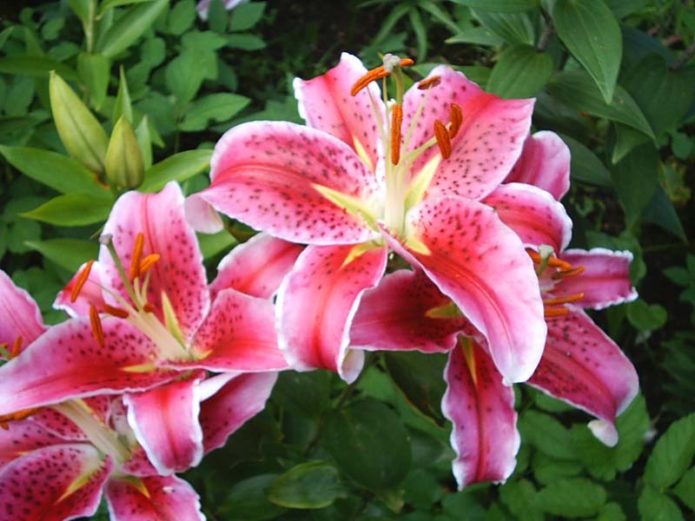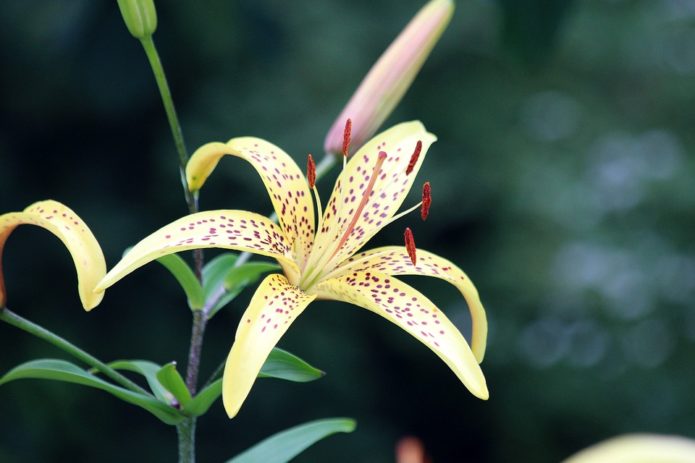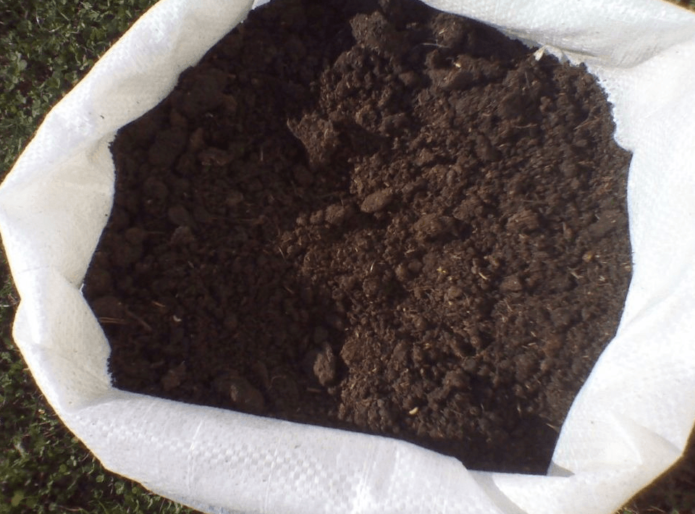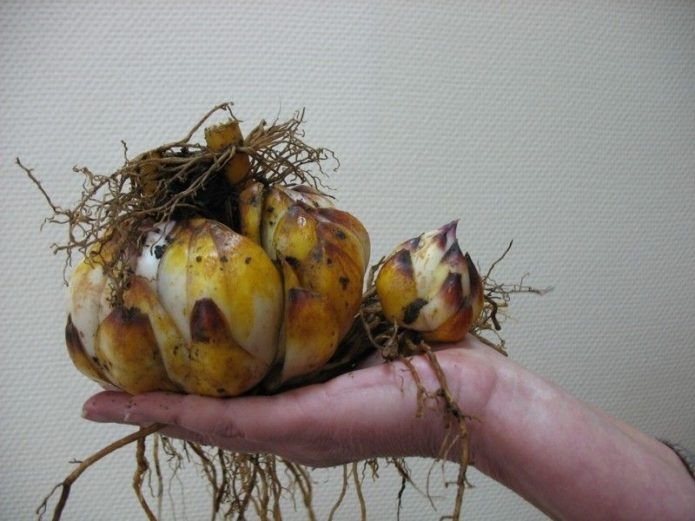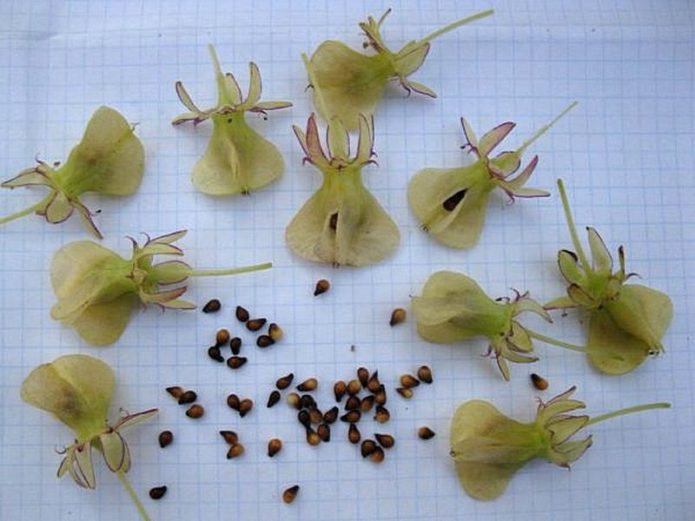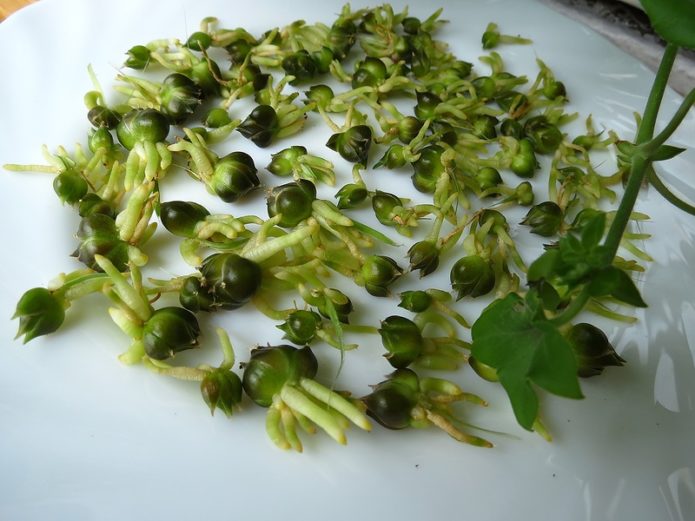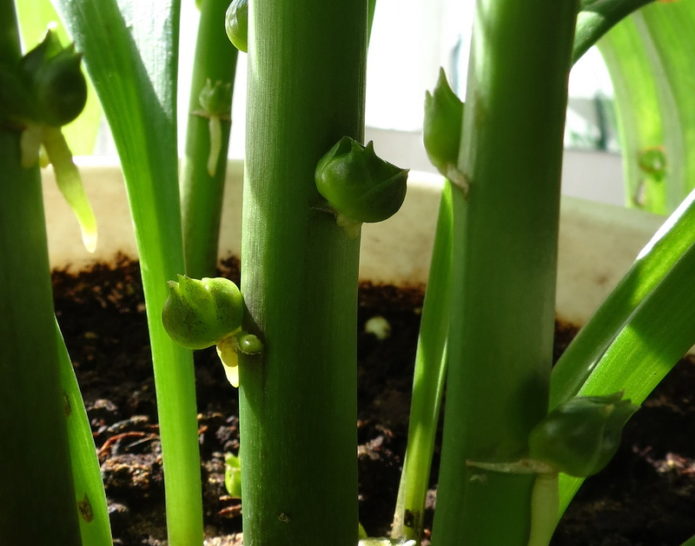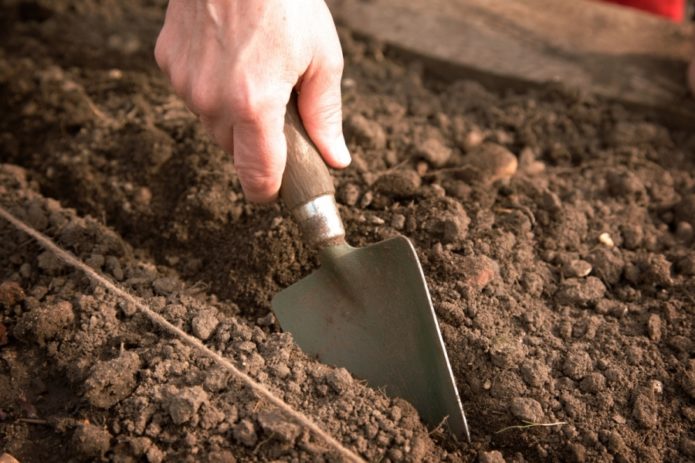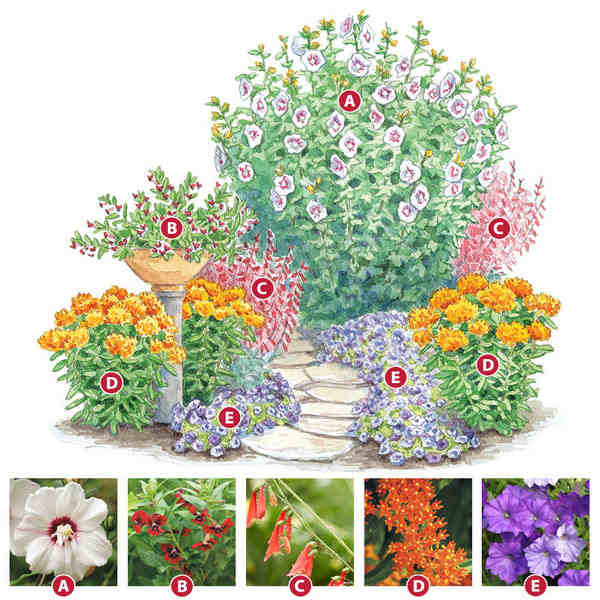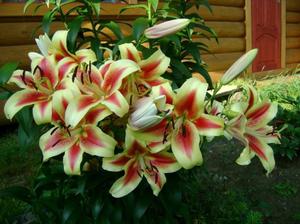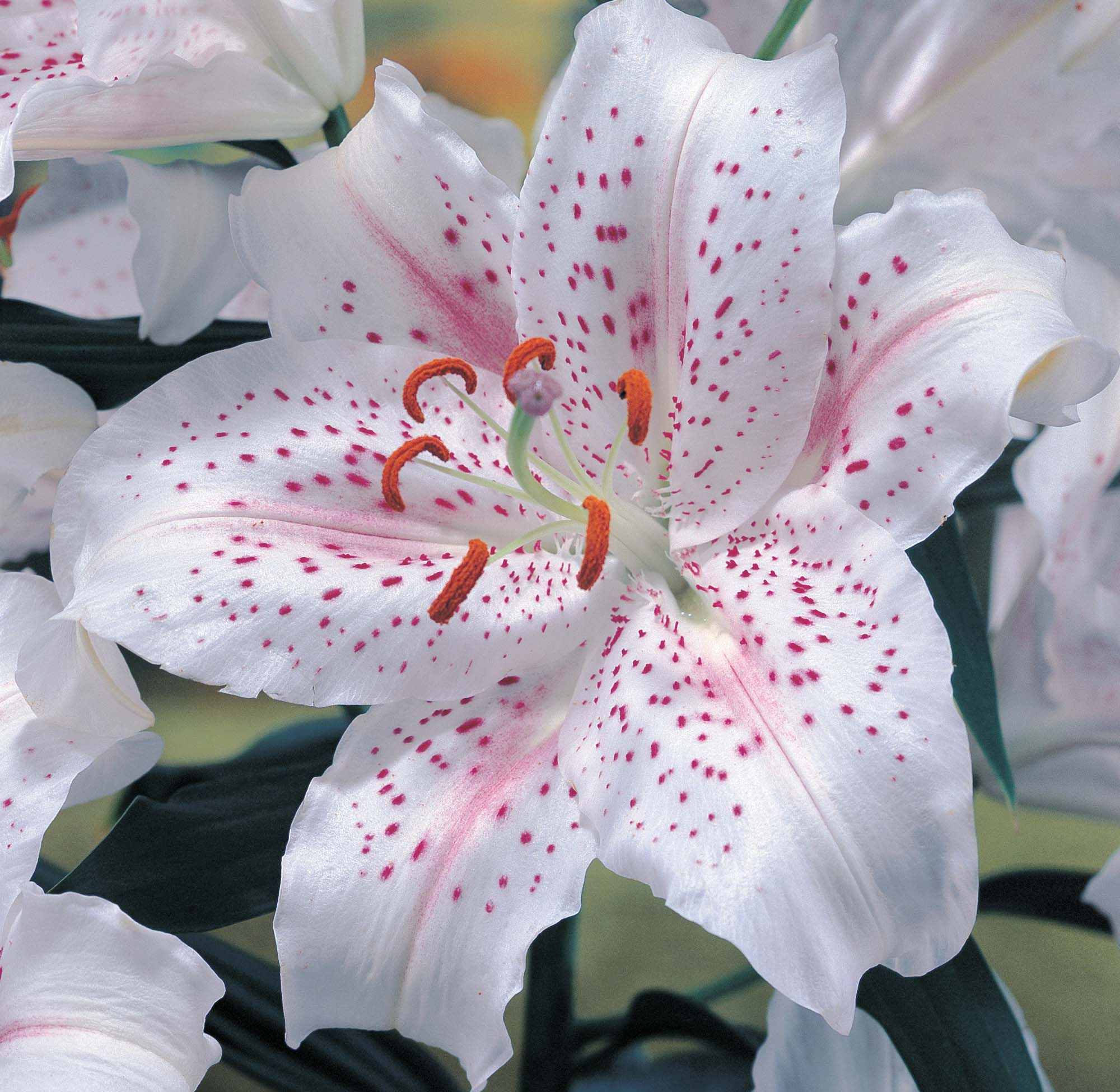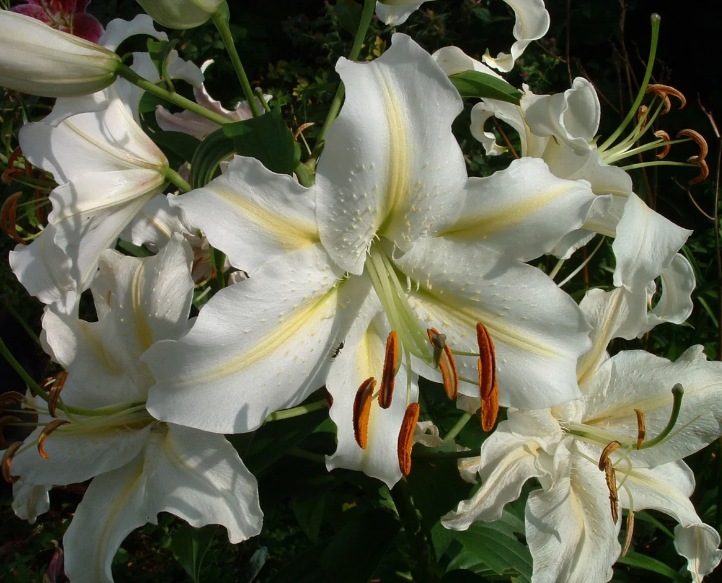Lilies are often the main decoration of a garden or front garden. It is not in vain that this flower is popularly called the "Tsar's crown". He requires a special approach for planting and further care. This technology has its own secrets. Novice growers want to know why planting lilies in the fall is so important, when and how to plant them so that they bloom and delight the eye for years.
Content
When to plant: in spring or autumn?
For many, this issue is still controversial. Someone is convinced that it is necessary to plant flowers in early spring, another is afraid of frost and waits for May, the third is sure that the optimal time for planting lilies is autumn. It is the last option that is the most correct. The main reason is flowering. After the spring planting, there will be no "crown" on the stem - the lily will bloom only in the next season.
Landing dates
They differ not only depending on the plant variety, but also on the climate. The main rule is to create a reserve of time for the plants to develop and strengthen the root system before frosts break out. The second point is the maximum temperature. According to agrotechnical requirements, lilies can be planted when it is stable outside +10 ºC. If you do this earlier, the flowers will begin to grow, which we absolutely do not need.
Geography and time
| Geography | Boarding time |
| Moscow and Moscow region | second part of September - October |
| Middle zone of Russia | |
| Belarus | |
| Ural | second part of August - September |
| Siberia | |
| South of Russia | October - mid November |
Planting order depending on the variety of lilies:
- White lilies - they have the shortest rest period of all.
- North American and Caucasian species.
- Tubular, Asian and Oriental species, tiger and Tibetan lilies (the latter two are also suitable for spring planting).
How to prepare a site
Choosing a place for lilies should be thoughtful, because they will grow there for at least 5 years. The site should not be strongly blown, and the flower needs light and sun in abundance. Shadow is undesirable; in extreme cases, this unfavorable factor should be minimized.
If you are going to plant tubular lilies, or Candidum (white lily "Flower of the Madonna"), the soil needs to be limed - add ash or chalk, limestone. The rest of the varieties like the acidic soil. In the case of heavy soils, consider drainage as the flowers simply won't take root. Make sure that there is no stagnation of water both during planting and in the process of growth. "Tsar's crown" does not like excess liquid, but it also does not tolerate dryness - provide moderate humidity.
Fertilizers
When planting lilies, the quality of the soil is important, it must be properly prepared:
- Dig the area to a depth of 30, and preferably 40 cm.
- If the earth is heavy, digging it up by 1 sq. m, add a bucket of peat and the same amount of sand, for the lungs, only peat is enough.
- For 1 sq. m also add compost or humus. 5-10 kg of one or the other per meter.
- Chemical fertilizers are also good in addition to organic matter: per 1 sq. m use 100 g of superphosphate and 50 g of potassium sulfate.
Do not overdo it with fertilizers if you already have good land on the site. For example, black soil.
Preparing planting material
Lily is a bulbous plant and reproduces, respectively, by bulbs. However, you can sow seeds and plant the so-called bulbs.
Bulbs
It is important to choose good bulbs. Pay attention to the following points:
- the bulb should be at least 3-4 cm in diameter;
- to the touch, it should be firm, dense;
- before buying planting material, you need to inspect well for mold and stains;
- the roots must be alive, not rotten;
- it is better if the bulbs for autumn planting are without sprouts.
Immediately before planting, soak dried bulbs in water for 2-3 hours. To play it safe and avoid fungal diseases, you can pickle them in a solution of potassium permanganate. Let the bulbs lie in it for 15-20 minutes, then dry them in the shade.
Material with scions
The sprouts are specially released so that the lily takes root or blooms faster in the same summer, which, of course, is unlikely. One way or another, sprouts in the fall are an unnecessary problem. Their presence indicates that the bulb is not "sleeping" and is ready to grow. But what is the growth when frost and snow are ahead? Naturally, the shoots will die off, and the planting material will rot in the ground and there will be no shoots in the spring.
The simplest solution is to plant an onion with a sprout in a pot and put it in a room for the winter where there is a lot of light and not hot. Water in moderation, and plant in a flowerbed in spring.
How to plant material in the fall:
- Let the sprouts extend up to 20 centimeters.
- Using gentle rotational movements alternately in one direction and the other, "unscrew" the sprouts from the bulbs.
- The material is ready for a normal planting in the winter.
The only thing is that such seedlings require care in the spring, like greenhouse plants.
Seeds
Usually, lily seeds are sown in late winter - early spring in boxes and germinated on windowsills until stable heat arrives. Then the seedlings are sent to the front garden. They begin to bloom in 3-4 years.
In the case of seeds, as with bulbs, autumn is the best time to lay the foundation for future flowers.
In the fall, sow lily seeds directly into the ground. In the spring they will certainly sprout, and in the summer - buds, if, of course, you prepare them correctly for this:
- do not delay sowing after collecting the seeds, use them at most in the second year, and preferably in the first year, since lily seeds quickly lose their germination;
- it is not necessary to germinate - they will rise in the spring with sufficient moisture and heat;
- before sowing, it is recommended to soak the seeds in a solution of hydrogen peroxide with a concentration of 1-2%, you can also hold them in bleach - this is an alternative to peroxide, and especially advanced summer residents dilute a 0.04% solution of zinc sulfate; whichever you choose, after 15 hours of treatment, the seeds will germinate faster and will not be attacked by bacteria.
Planting lilies with seeds is troublesome, but productive. No other type of planting material will give such a number of healthy, beautiful flowers with juicy buds.
Bubbles
The scientific definition of bulbs is stem buds. They are formed in lilies "in the bosom" - in the leaves. If they spontaneously fall to the ground, they sprout, and then full-fledged flowers are obtained from them.But chaotic spontaneous sowing in a flower bed is not the best option. Therefore, they must be collected and planted in the order in which the flowers will then grow for years.
Not all varieties of lilies give such seeds: only tiger, most Asian hybrids, some tubular. The buds will appear only in the third year after planting the bulbs.
These seeds are planted only in autumn. In the ground, they continue to increase in size for some time, and in spring they germinate.
Video: how to plant lily babies in the fall at your dacha
How to plant future lilies: step by step instructions
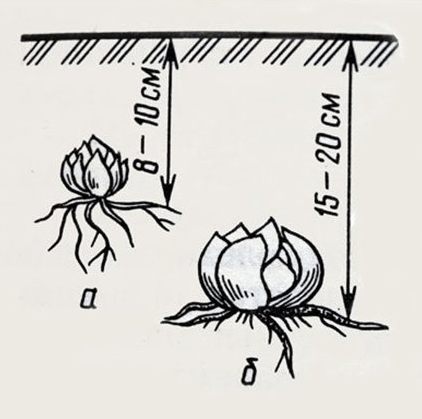
You can arrange flowers on the site, within the boundaries of the flower bed or front garden, at your discretion
The general rule of thumb for landing is the correct hole depth. Some growers argue that it is the same not only for lilies, but in principle for all bulbous plants. In fact, it is better to adhere to specific recommendations that depend on the height of the stem of the future flower:
- low-growing varieties are laid to a depth of 10–12 cm if the bulbs are large; 7–8 cm, if small, leave 15–20 cm between the rows;
- plants of medium height are planted with large bulbs 12–15 cm deep, small ones - 10 cm, row spacing - about 25 cm;
- tall lilies are buried with large bulbs by 15–20 cm, small ones - by 12 cm, and the distance between rows is made about 30 cm;
- snow-white lily, terracotta and Gatsby are planted only a couple of cm deep.
In order not to memorize these numbers, you can simply multiply the height of the bulb itself by three. Let's say it is 5 cm, which means that it should be planted at a depth of 15 cm.
When planting, the type of soil is also important. If it is light, you can dip the bulb deeper, heavy - better higher.
Bulbs (including those with sprouts after they have been removed)
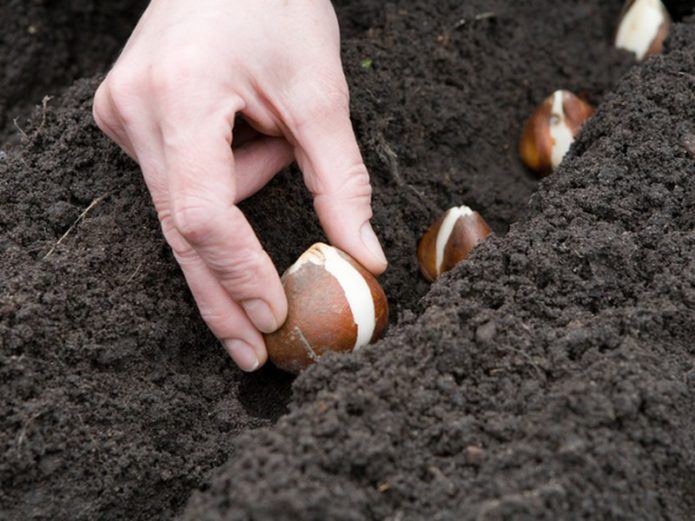
Bulbs from which the shoots were removed before planting should be better covered for the winter - with spruce legs or straw
The landing procedure is pretty simple:
- In the prepared area, dig holes of the appropriate depth plus 2–3 cm.
- Put some coarse sand at the bottom - take the same 2-3 cm.
- Place the bulb with the rhizome down, straighten the roots.
- Sprinkle with some sand.
- Fill with soil on top, compact it and water it abundantly.
Bubbles
The optimal planting period is August and September. The time depends on the geographic location. If the bulbs are easily separated, then they are ripe and can be removed. Another sign of ripeness is the roots on small balls.
Then we do the following:
- For 3-4 weeks we put the bulbs in the refrigerator, setting the temperature there + 3… + 4 ºC - for stratification.
- We sow peas directly into the open ground to a depth of 2-3 cm. The distance between the bulbs should be at least 5 cm, and between the grooves - 20 cm.
- Water the planting.
- Cover with a layer of peat chips or humus.
Seeds
Two landing options:
- The short one is to sow seeds in open ground.
- Long - sow first in a container, and on a flowerbed only in spring or even next fall.
The first option is simple, but risky - the seeds may not survive the winter in the ground. However, you can risk:
- Make grooves 3 cm deep in the prepared soil.
- Sprinkle the seeds in them not very thickly - about the way the flowers should grow.
- Sprinkle them with soil, compact it lightly and water the plantings.
- Cover them with spruce paws or straw.
Second option:
- Take a container (box) with a depth of at least 10 cm.
- Put soil in it - a substrate of garden soil, peat and sand.
- Make grooves about 0.5 cm deep.
- Sprinkle the treated seeds into the grooves.
- Sprinkle with soil.
- Moisten crops with a sprayer.
- Wait for the seedlings to sprout.
- Plant them in open ground in the spring or next fall - remove them from the container one at a time with the ground and set them in holes with a depth equal to the length of the rhizome.
- Water the flowers you planted.
Landing patterns
Lilies also coexist well with roses, and undersized densely planted flowers will serve as a green carpet with multi-colored blotches.
Care after landing
The main thing is to prevent the lilies from freezing. This applies to absolutely all types of planting material.
There is no need to water them abundantly every day in the fall if it rains from time to time.
When the snow falls in a layer of more than 10 cm, it is very good for planting, nothing needs to be done. If there is less snow, shovel more of it onto the flowerbed - for warming.
It is necessary to remove mulch (covering material) in the spring as the snow melts, and not on the move, otherwise the sudden frosts in March will destroy the sprouts.
Lily planting material can be bought only once, and then propagated by yourself. How exactly - bulbs, seeds or bulbs - everyone will choose for himself.
